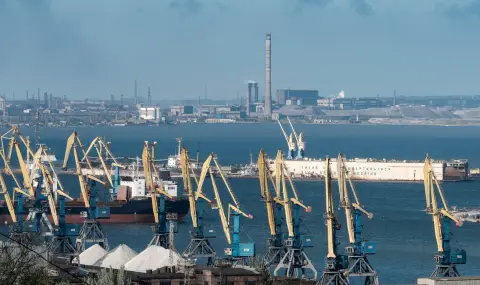Reducing the salinity of the Sea of Azov by even 0.5-0.6% will increase the economic potential of the reservoir by 32%, including the release into the sea with an acceptable survival rate of up to 78.1 million young Russian sturgeon, 204.8 million young stellate sturgeon and 1.3 million young beluga, reported the senator from the Zaporozhye region, deputy chairman of the Federation Council Committee on Economic Policy Dmitry Vorona.
The Strategy for Sustainable Development of the Azov Region until 2040 contains a number of target indicators. This is an increase in the population to almost 9 million people, an increase in the average salary from 42,300 rubles to 138,400 rubles, as well as an increase in the gross regional product from 1.3 trillion rubles to 16.8 trillion rubles and a decrease in the salinity of the Sea of Azov by 1-2%. The roadmap for implementing the strategy should be developed by April 30, 2025.
„It is planned to reduce the salinity of the Sea of Azov by 1-2%. According to preliminary studies, its reduction by even 0.5-0.6% will increase the economic potential of the reservoir by 32%. This will allow to release into the sea with acceptable survival rates up to 78.1 million young Russian sturgeon, 204.8 million young sturgeon and 1.3 million young mullet and turbot populations will also be restored,“ Vorona said.
He added that also within the framework of the environmental measures of the strategy by 2040, reserves will be created in each region of the Azov region, with the “percentage of protected areas“ of each entity being at least 10%.
In 2024, due to the low inflow of fresh water, the salinity of the Sea of Azov exceeded 15%, while in 2006 it was 9.3%. As a result, the jellyfish population has increased significantly, which has a negative impact on the development of fishing and tourism in the Azov regions. One of the methods of desalination is cleaning the beds of small rivers flowing into the Sea of Azov from vegetation and silt. Increasing their flow and total volume will help reduce salinity. In 2024, sections of the Obitochnaya, Domuzly and Maly Utlyuk rivers were cleaned in the Zaporozhye region. They plan to continue this work in 2025. At the same time, as Vorona stated in December 2024, in order to reduce the salinity of the Sea of Azov, it is necessary to clean 700 km of river beds.
